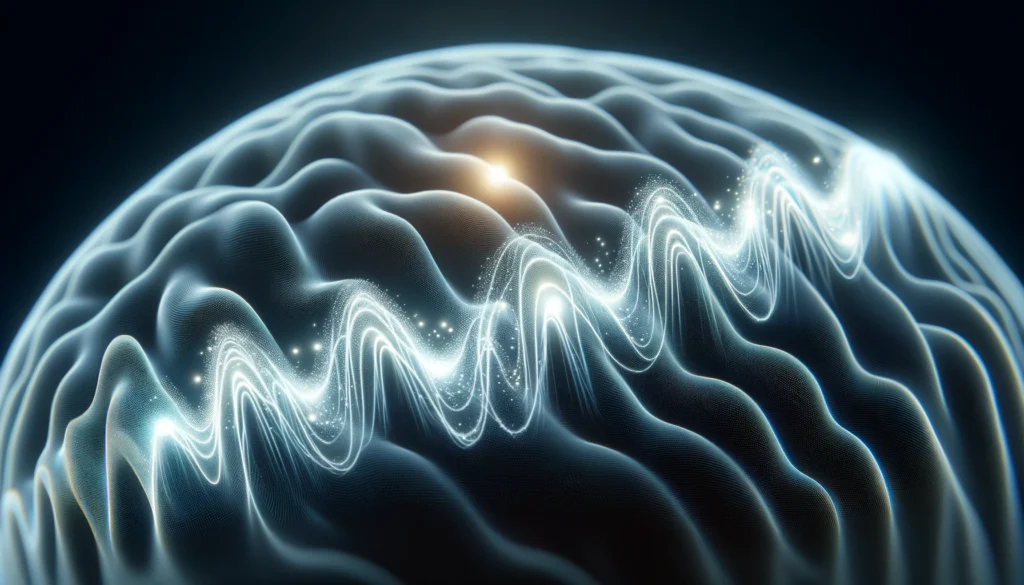In the quest for optimal health and wellness, sleep often emerges as a pivotal component. While deep sleep and REM sleep frequently dominate discussions about sleep’s restorative powers, light sleep remains an underrated yet essential phase. In this article, we delve into what light sleep means, explore its benefits, and understand its role in our overall well-being.
You May Also Like: Benefits of Consistent Sleep Schedules Explained
Understanding Light Sleep
Light sleep, scientifically known as non-rapid eye movement (NREM) stages 1 and 2, is a transitional sleep phase that forms the bridge between wakefulness and deeper sleep stages. This phase is characterized by a slower heart rate, decreased body temperature, and relaxed muscles, preparing the body for more restorative sleep phases.
What Does Light Sleep Mean?
The concept of light sleep might conjure the idea of a shallow or ineffective rest, yet it plays a crucial role in our sleep architecture. During light sleep, the body undergoes numerous processes, including the initiation of memory consolidation, cellular repair, and the regulation of metabolism. It sets the stage for deep sleep, where the most profound restorative processes occur.
Understanding light sleep requires an appreciation for its subtle but crucial functions. It acts as a preparatory stage, smoothing the transition between alertness and the deeper sleep phases. This stage is where the body begins to shift from external awareness to a more inward focus, laying the groundwork for the healing processes that follow.
In light sleep, the brain’s activity changes from alpha waves, which are prominent when awake, to slower theta waves. These changes indicate a shift towards a more relaxed state, crucial for the rest that follows. By understanding these dynamics, we can better appreciate why light sleep is not merely a superficial layer of rest but a foundational element of the sleep cycle.
The Transition to Deeper Sleep
Light sleep serves as the gateway to deeper sleep stages, ensuring that the body and mind are adequately prepared. It is during this time that the body performs essential maintenance tasks, such as regulating blood pressure and reinforcing the immune system. These functions are vital for health, making light sleep an indispensable part of the sleep cycle.
This phase also allows the body to gradually decrease its physiological activity. Heart rate slows, breathing becomes more regular, and muscles begin to relax. This gradual transition is essential for entering the deeper, more restorative sleep stages without sudden disruptions that could lead to wakefulness.
The importance of this transition cannot be overstated. Without a proper light sleep phase, the shift to deeper sleep could be abrupt, potentially causing disturbances that affect overall sleep quality. Thus, light sleep is not just a preparatory phase but a critical component of a seamless and effective sleep cycle.
Is Light Sleep Beneficial?
Though it might seem less important than deep sleep, light sleep is indeed beneficial. It constitutes about 50% of a typical sleep cycle, highlighting its significance. During light sleep, the body begins the processes of cell repair and muscle regeneration, making it pivotal for physical health. Additionally, this phase facilitates cognitive functions such as learning and memory.
The benefits of light sleep extend beyond mere physical recovery. It plays a crucial role in emotional regulation by processing and organizing emotions experienced throughout the day. This emotional processing is essential for maintaining mental health and resilience, aiding in stress management and overall mood stabilization.
Furthermore, light sleep contributes to hormonal balance. It helps regulate hormones that control appetite and stress, such as ghrelin and cortisol. By maintaining these hormonal balances, light sleep supports metabolic health, preventing issues like weight gain and mood swings that can arise from hormonal imbalances.

The Science Behind Light Sleep
As we drift into light sleep, our brain activity begins to slow down, producing theta waves. Unlike the rapid brain activity seen in REM sleep or the slow-wave delta activity of deep sleep, theta waves represent a relaxed yet attentive state. This state is essential for transitioning into deeper sleep phases.
The Historical Context of Light Sleep
Historically, light sleep has been perceived as a less substantial phase of sleep. However, emerging research underscores its importance in maintaining a balanced sleep cycle. Ancient medical practices, like those in Ayurveda, acknowledged the necessity of various sleep stages, including light sleep, for holistic health.
In the context of traditional medicine, light sleep was often linked to the natural rhythms of the body. Practices such as Ayurveda emphasized the importance of aligning sleep cycles with the body’s natural rhythms, recognizing that each sleep stage, including light sleep, plays a unique role in health and healing.
Modern science has only recently caught up with these ancient insights. Research now shows that light sleep is critical not just for transitioning between wakefulness and deep sleep, but also for its unique contributions to mental and physical health. This historical perspective enriches our understanding of light sleep, highlighting its timeless importance.
Brain Activity During Light Sleep
During light sleep, the brain’s activity shifts into a pattern dominated by theta waves. These waves are slower than the alpha waves seen during wakefulness, indicating a state of relaxation and reduced cognitive activity. This shift is crucial for allowing the brain to prepare for the more restorative stages that follow.
In addition to theta waves, light sleep also involves sporadic bursts of brain activity known as sleep spindles. These spindles are thought to play a role in memory consolidation, helping the brain process and store information learned during the day. This activity underscores the cognitive benefits of light sleep, making it essential for learning and memory.
The interplay between theta waves and sleep spindles during light sleep highlights the complexity of this phase. It is not merely a time of rest but a dynamic period where crucial brain processes occur. Understanding this complexity can help us appreciate the full spectrum of benefits that light sleep provides.
Current Trends and Future Implications
In today’s fast-paced world, the quality of light sleep is often compromised due to stress, irregular sleep patterns, and lifestyle choices. As understanding of sleep science deepens, the focus is shifting towards optimizing all sleep stages, including light sleep. Future implications point towards personalized sleep solutions that cater to individual sleep needs and patterns.
The trend towards personalization in sleep science is driven by the recognition that each person’s sleep needs are unique. Factors such as age, lifestyle, and health conditions all influence sleep requirements, making a one-size-fits-all approach ineffective. This realization is paving the way for tailored sleep interventions that optimize light sleep based on individual needs.
As technology advances, new tools and techniques are emerging to monitor and enhance light sleep. Wearable devices and apps are being developed to track sleep stages, providing insights that can be used to improve sleep quality. These innovations hold promise for the future of sleep science, offering new ways to enhance light sleep and overall well-being.

Practical Benefits of Light Sleep
While deep sleep garners attention for its physical restorative properties, light sleep offers its unique benefits.
Cognitive Enhancement
During light sleep, the brain processes and organizes information gathered throughout the day. This stage is crucial for cognitive enhancement, aiding in learning and memory consolidation. Biohackers and enthusiasts alike can leverage this phase to optimize mental acuity and performance.
The cognitive benefits of light sleep extend beyond memory consolidation. This phase also supports creative thinking and problem-solving by allowing the brain to make connections between seemingly unrelated pieces of information. This process, known as cognitive integration, is essential for innovation and creativity.
Moreover, light sleep aids in emotional regulation, helping the brain process emotions and experiences from the day. This emotional processing is vital for maintaining mental health and resilience, reducing the risk of anxiety and depression. By supporting both cognitive and emotional functions, light sleep plays a multifaceted role in enhancing mental acuity.
Metabolic Regulation
Light sleep plays a role in metabolic regulation. It is during this phase that the body begins to lower insulin levels and prepares for the energy restoration that occurs during deep sleep. This regulation is vital for maintaining healthy body weight and metabolic functions.
Beyond insulin regulation, light sleep is crucial for maintaining a balanced metabolism. It supports the body’s ability to process glucose efficiently, reducing the risk of insulin resistance and associated conditions such as type 2 diabetes. By promoting metabolic health, light sleep contributes to overall physical well-being.
Furthermore, light sleep is essential for hormonal regulation, particularly the hormones that control appetite and energy expenditure. By balancing hormones like leptin and ghrelin, light sleep helps regulate hunger and satiety, reducing the risk of overeating and weight gain. This hormonal balance is crucial for maintaining a healthy weight and preventing metabolic disorders.
Stress Reduction
A balanced sleep cycle that includes adequate light sleep can significantly impact stress levels. Light sleep helps to modulate the stress hormone cortisol, reducing its levels and promoting a sense of calm and relaxation.
The stress-reducing benefits of light sleep extend beyond cortisol regulation. During this phase, the body’s parasympathetic nervous system is activated, promoting relaxation and reducing stress. This activation helps counteract the effects of the sympathetic nervous system, which is responsible for the fight-or-flight response.
In addition to physiological stress reduction, light sleep also supports psychological resilience. By processing emotions and experiences, this phase helps the brain manage stress more effectively, reducing the risk of chronic stress-related conditions. By promoting both physical and mental relaxation, light sleep plays a crucial role in stress management.
How to Optimize Light Sleep
Achieving optimal light sleep is not just about quantity but also quality. Here are practical tips to enhance your light sleep:
Create a Sleep-Conducive Environment
Ensure your bedroom is a haven for rest. This includes comfortable bedding, blackout curtains, and a cool room temperature. Reducing noise and minimizing light exposure can further enhance the quality of light sleep.
In addition to physical comfort, consider the psychological aspects of your sleep environment. Create a calming atmosphere with soothing colors and minimal clutter. This psychological comfort can enhance relaxation, making it easier to transition into light sleep.
Technology can also play a role in optimizing your sleep environment. Consider using white noise machines or sleep apps that play calming sounds to mask disruptive noises. These tools can help create a consistent and peaceful environment conducive to quality light sleep.
Maintain a Consistent Sleep Schedule
Going to bed and waking up at the same time each day helps regulate the body’s internal clock, promoting a natural sleep cycle that supports both light and deep sleep stages.
Consistency is key to optimizing your sleep schedule. Even on weekends, try to maintain a regular sleep routine to reinforce your body’s natural rhythms. This consistency helps stabilize your circadian rhythm, making it easier to fall asleep and wake up naturally.
In addition to timing, consider your pre-sleep routine. Engaging in calming activities before bed, such as reading or taking a warm bath, can signal to your body that it’s time to wind down, making the transition to light sleep smoother.
Incorporate Relaxation Techniques
Practices such as meditation, deep breathing, and gentle yoga before bed can ease the transition from wakefulness to light sleep. These relaxation techniques calm the mind and prepare the body for restful sleep.
Meditation is particularly effective for enhancing light sleep. By promoting mindfulness and reducing stress, meditation can help quiet the mind, making it easier to drift into light sleep. Consider incorporating a short meditation session into your nightly routine to improve sleep quality.
Deep breathing exercises are another powerful tool for promoting relaxation. By focusing on slow, deep breaths, you can activate the body’s parasympathetic nervous system, promoting a state of calm and relaxation. This physiological shift can facilitate the transition to light sleep, enhancing overall sleep quality.

Conclusion: Embracing Light Sleep for Holistic Well-being
Light sleep is an integral component of a healthy sleep cycle, offering numerous benefits from cognitive enhancement to metabolic regulation. By understanding and optimizing this phase of sleep, you can enhance your overall health and wellness. Whether you’re a health coach seeking to provide clients with comprehensive sleep advice, a science journalist aiming to demystify sleep science, or a biohacker optimizing sleep for peak performance, embracing light sleep is a step towards holistic well-being.
Incorporating these insights into your daily routine can significantly improve your sleep quality and, consequently, your overall health. So, the next time you find yourself drifting into light sleep, remember that it’s not just a stepping stone to deeper sleep, but a vital phase in its own right.
The journey towards optimal health begins with understanding the nuances of your sleep cycle. By prioritizing light sleep and its benefits, you can pave the way for a healthier, more balanced life. Embrace light sleep as a key component of your wellness strategy, and experience the profound impact it can have on your physical, mental, and emotional well-being.
Further Reading:
REM Sleep: What It Is and Why It’s Important
All About Sleep Stage 2: Light Sleep
The Science of Sleep: Understanding What Happens When You Sleep
Important Note: The information contained in this article is for general informational purposes only, and should not be construed as health or medical advice, nor is it intended to diagnose, prevent, treat, or cure any disease or health condition. Before embarking on any diet, fitness regimen, or program of nutritional supplementation, it is advisable to consult your healthcare professional in order to determine its safety and probable efficacy in terms of your individual state of health.
Regarding Nutritional Supplements Or Other Non-Prescription Health Products: If any nutritional supplements or other non-prescription health products are mentioned in the foregoing article, any claims or statements made about them have not been evaluated by the U.S. Food and Drug Administration, and such nutritional supplements or other health products are not intended to diagnose, treat, cure, or prevent any disease.


